The Article
Node 2i Wireless Streamer From Bluesound
12th December 2019

Part of the company’s multi-room project, the Node 2i features a host of wireless technologies that continue to evolve
I’m a bit late off the mark on this one, I know but I’ve been meaning to check out this streamer for some time and failed to get around to it. That said, there is value in splitting from the crowd and producing a later review. Let me tell you why.
Even after the initial launch and the early reviews, I was continually reminded of the 2i’s presence by a stream (pun intended) of updates and enhancements.
Which only proves how committed Bluesound is to this product and how the company sees it as a basis, a platform to build upon.
This one point is very important, deserves to be dwelt upon for a moment and is hardly ever talked about in the media.
Bluesound’s post-launch actions should breed customer confidence, a fragile thing at the best of times.
I don’t know how many products I’ve seen hit the streets with a loud bang, seen lots of early reviews, heard lots of fuss from the attendant company amongst the lights, music and party hats, heard about the plans and the in-house developments only to realise, five minutes afterwards, that the company has dropped the entire product like a hot potato, turned its back upon it a month later and denied it had ever released it after six months.
Not with Bluesound and not with the Node 2i. That’s important if you’re looking to make an investment in this thing. Hence, this review covers a rapidly maturing product.
Benefitting from initial research ploughed, by mutual owner Lenbrook, into the NAD M50.2, the Node 2i is the recipient of thought and time taken. Powered by an ARM Cortex A9 speeding along at 1GHz, you’ll find a 32bit/192kHz DAC inside. On the rear of the chassis, audio inputs include a coax and optical while audio outs include a pair of fixed RCAs, coax/optical, 12V Trigger, subwoofer and – on the front – a headphone socket for a 3.5mm jack.
Digitally? You’ll also find a USB-A at the back which will take USB stick sources and a Type B for servicing.
Internet services include the usual hordes: Spotify, Tidal, Qobuz, Deezer, Napster and more. Internet radio is there too.
Most recently, the 2i now supports Amazon Music HD and Ultra HD.
Sound quality has been addressed within the design, just look at the internal isolation between the compact wireless technologies and the basic audio kit for proof of that. Speaking of wireless, that’s dual band (802.11ac) and that comes with Bluetooth 5.0 aptX HD, via Qualcomm CSR8675 chip, that runs both ways so you can receive a signal for Bluetooth headphone use, for example.
AirPlay 2 is also included which will aid multi-room set-up, no end. AirPlay 2 also gives you more options for control, including using Siri voice assistance. Amazon and Google Assistant can also be used in this respect too. By grouping a Node 2i with older Bluesound Players in the BluOS App, you can also add AirPlay 2 compatibility to your entire BluOS system.
Finally, the RC1 (£49) remote control should be available now as an additional, alternative control option.
INSTALLATION
Locating and loading BluOS onto my iPhone was easy. Looking for the 2i via my home’s Wi-Fi was a tad difficult. Now, my Wi-Fi is not the fastest or the most reliable so that might be something to do with my location/broadband but the app steadfastly refused to see the machine. During the tests, I actually much preferred attaching the 2i to a wired connection. In my case, I used a high-speed CAT 6a cable for enhanced signal transfer speeds.
If sound quality is everything, you should be running the 2i wired anyway. The latter will produce inherently superior sound quality than a wireless link.
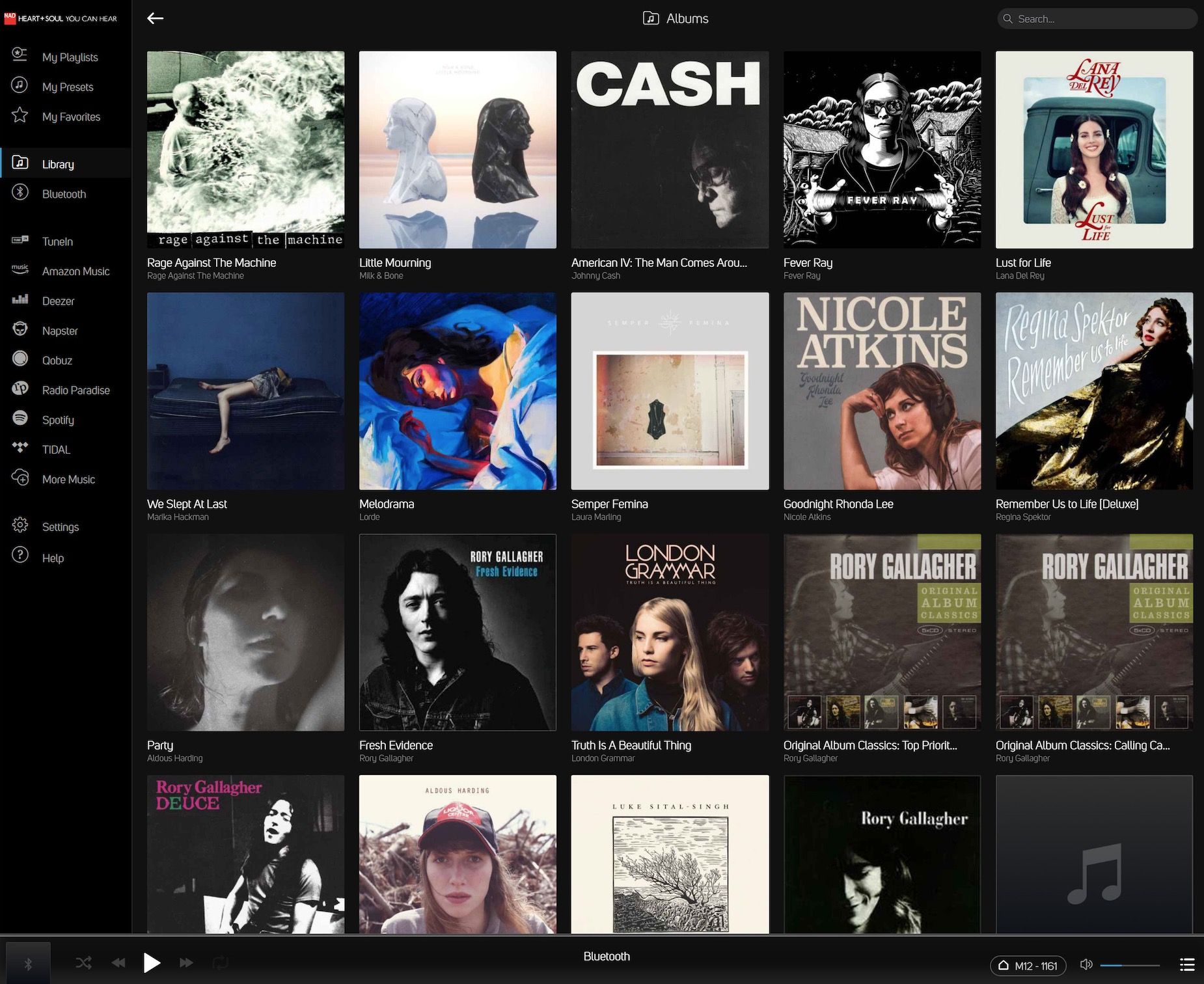
Once the app saw my 2i, it then updated the software automatically. This was a five-stage process which lasted a few minutes only. In the meantime, the 2i produced a red/green flashing light show to indicate that it was receiving the updates. I recommend this action as a first step before use. Getting the late updates may improve usability, compatibility and sound quality.
While I was waiting, I switched on Bluetooth via my phone. The 2i was seen on my phone’s Bluetooth list, immediately. No pairing buttons had to be pressed on the 2i’s chassis.
SOUND QUALITY
Once the All Done! notification flashed on my phone to indicate the completion of the updates, the 2i shone a rather confidant blue light and my app popped up a menu of source choices.
I started with radio via TuneIn and dived into a bit of chat via BBC Radio 4. Chatty radio is often ignored during streamer tests but I actually see it as the most valuable source in the entire test because of vocal tonal nuances and changes in ambience.
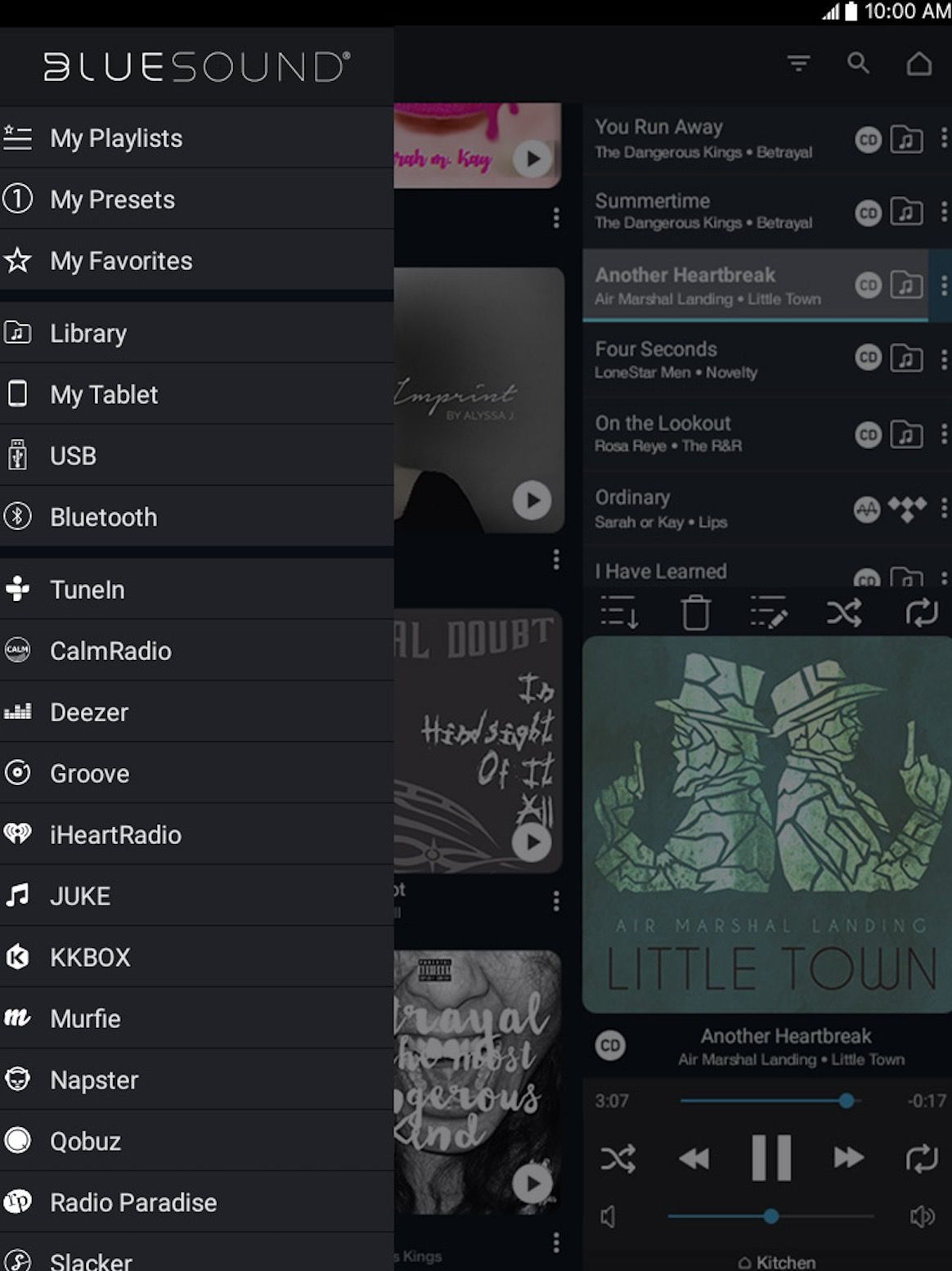
For example, I was intrigued to hear tonal differences from three voices. More than that, though, I also successfully heard ambient effects. The latter was actually extremely important in terms of evaluating the 2i’s overall sound quality because the sounds behind the voices or the differences in modulation of the voices because of the room are often some of the most difficult suites of information that a streamer like this can project.
So I heard a studio broadcast chatting about Chinese food. The studio sounded relatively spacious with the microphone at an appreciable distance from the mouth. The guest Chinese chef wasn’t in the studio. It sounded like she was outside on the street with a microphone even further from the mouth. Finally, I heard a continuity announcer. Rich, fruity, obviously sitting in a small, enclosed space with the microphone near to the mouth. The voice full of texture and resonance.
That I heard all of this from a mere streamer was intriguing to say the least. It also proved a point, that the 2i offers a sound quality that is high in detail and clarity, low in noise and with a potent midrange insight. In many ways, this was the most valuable part of the sound test because it revealed just how sensitive the 2i could be in terms of refinement.
I then tried Swissgroove Radio – well, why not? – listened and was impressed with the overall clarity and low noise presentation from this pop/funk track. The soundstage was not only broad but the attendant detail was rich. I noted the fine treble performance, focused yet delicate.
I then switched to Amazon Music and sent a stream of Dua Lipa’s Don’t Start Now via Airplay to the 2i. A still lower noise stream sourced this music, like the TuneIn app above, produced a rock-solid streamed connection without the hint of a break or interruption of any sort.
The quality was very good indeed. Soundstage produced a wide and spacious output with a relatively neutral presentation. Frequencies were disciplined with a rhythmic bass output to drive the music forward.
I then plugged in a USB stick and played jazz via Sonny Rollins’ St Thomas at 24bit/96kHz. Sound quality was admirable. Dynamic reach may have been clipped at the extremes while midrange insight hit a glass ceiling and was a little forward during sax crescendos at high volumes.
That could have been me, though. I was busy using a Wi-Fi extender in my listening room – digital noise from that can have an affect. That said, there was much to like here. I was happy to hear the instrumental separation and how the ear was able to easily pick up either frequency extreme with ease. Hence, the cymbal taps were precise and informative yet the upright bass was never, at any time, masked or hidden by the associated cacophony from the sax and piano. The bass was focused and occupied enough space to create a foundation for the track as a whole.
The midrange focus was an obvious highlight of the music as a whole. The 2i was able to dig deep into the mix to reveal everything. The lot. No piece of information was left on the studio floor. The 2i offer nothing if not musical value here.
I then looked at Bluetooth via my phone. Pushing a Paul McCartney track, My Valentine, via a lossy file to the 2i, I was happy with the overall playback. Yes, the inherent file type lacked finesse and detail while the 2i repeated that slight forward element at high volumes in the upper mids (nothing harsh you understand, it’s subtle although it is there) but the overall sound was fairly neutral and balanced with no obvious nasties to make you wince. Bluetooth can sometimes produce an edgy and brittle playback, especially via a lossy file but the 2i performed well here, giving a rather civilised presentation. Instrumental separation was satisfyingly implemented meaning that space was able to infuse the soundstage and in between each instrument, adding a relatively full and wholesome tone to the music.
CONCLUSION
Compact, well built, fully featured and easy to use, what’s not to like? The price is spot on. I’m more than happy with the sound quality, especially at this price point. The Node 2i tackled all sources – whatever their stripe – with aplomb. Whether they be streamed from devices, over the Internet or plugged in directly, this Swiss Army knife of a streamer maintains a high quality of sound across the board. A brilliant little box and no mistake.
BLUESOUND NODE 2i WIRELESS STREAMER Price: £499 Website: www.bluesound.com TO BUY CLICK BELOW: UK - https://amzn.to/3mQGAN3 USA - https://amzn.to/38gUTXd EUROPE - https://amzn.to/34RzfXn
GOOD: build, features, overall sound quality, easy to set up
BAD: nothing
RATING: 8
If you would like to purchase this turntable, you can from the following links:
[Don’t forget to check out my Facebook Group, The Audiophile Man: Hi-Fi & Music here: www.facebook.com/groups/theaudiophileman for exclusive postings, exclusive editorial and more!]
REFERENCE
Arcam rPlay
Tellurium Blue Cables

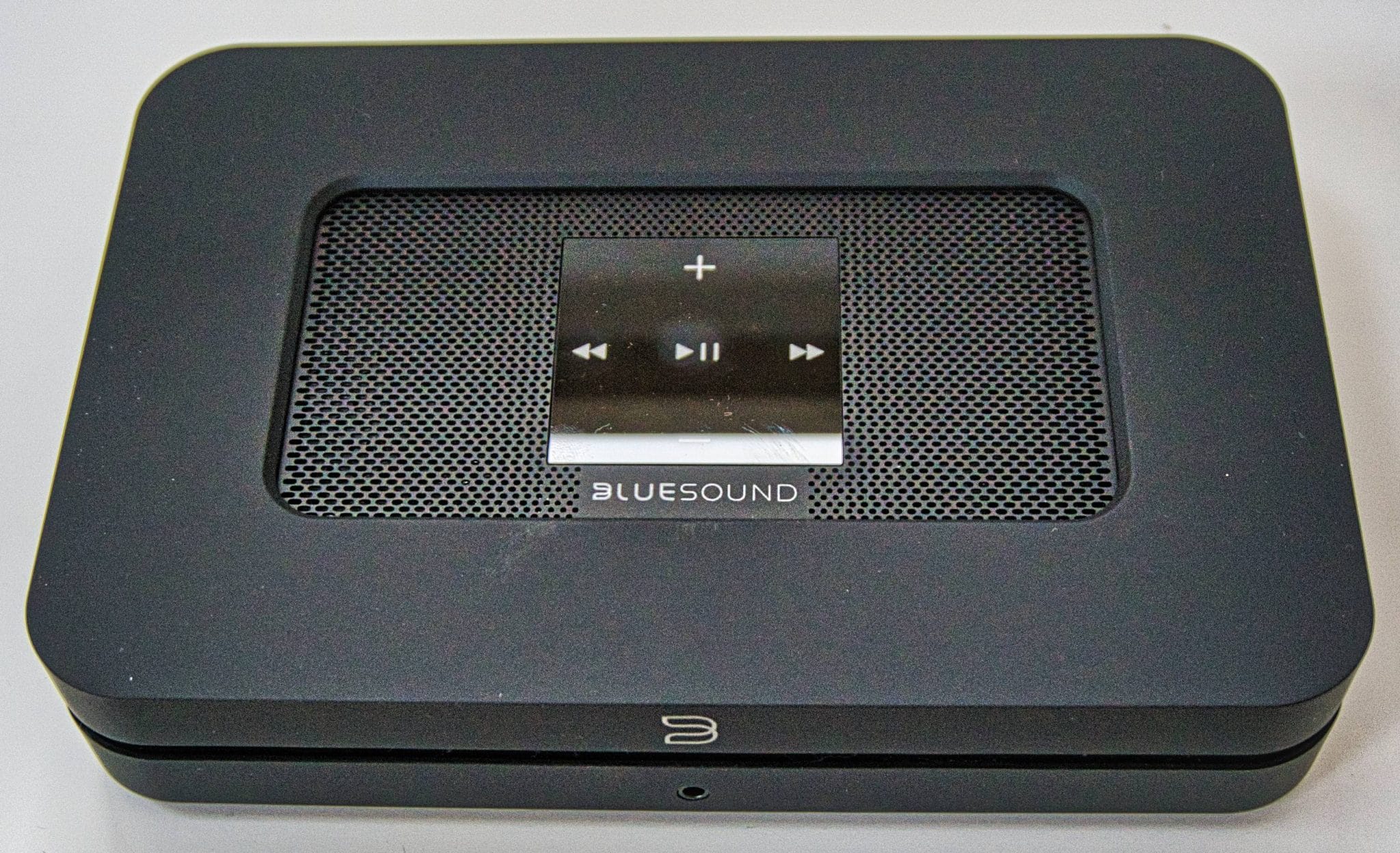
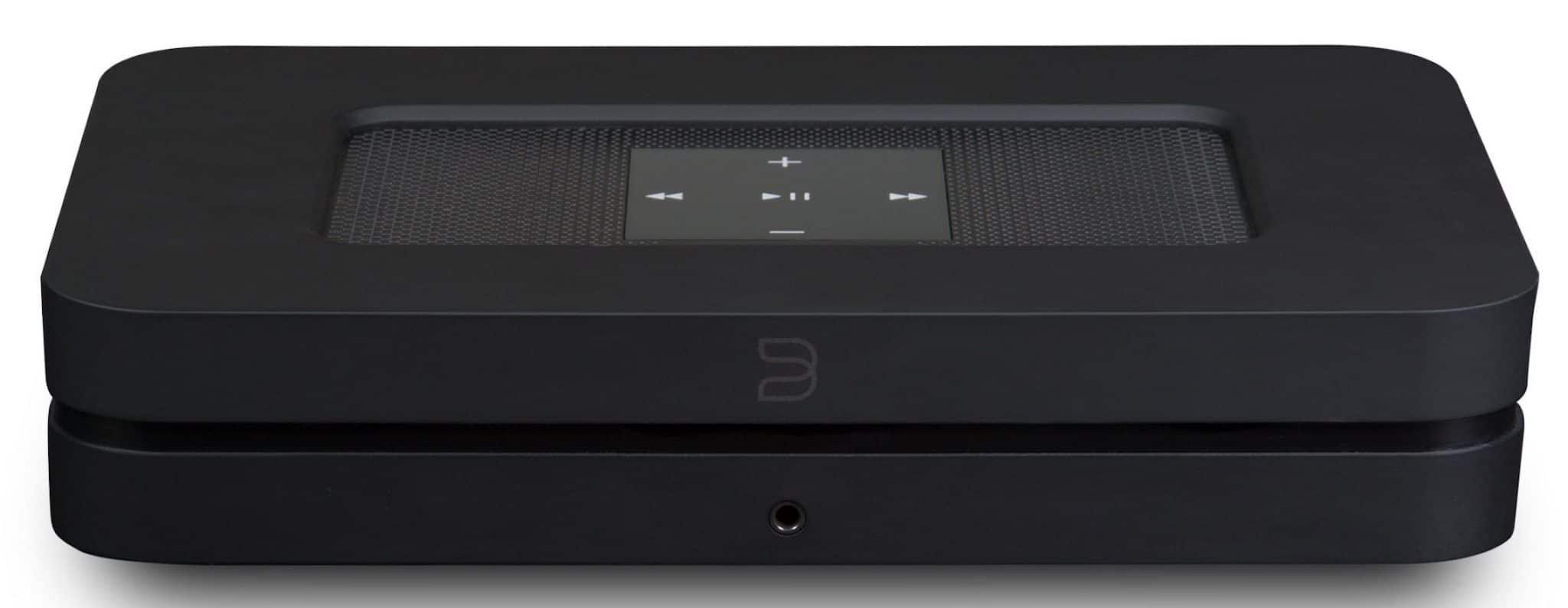

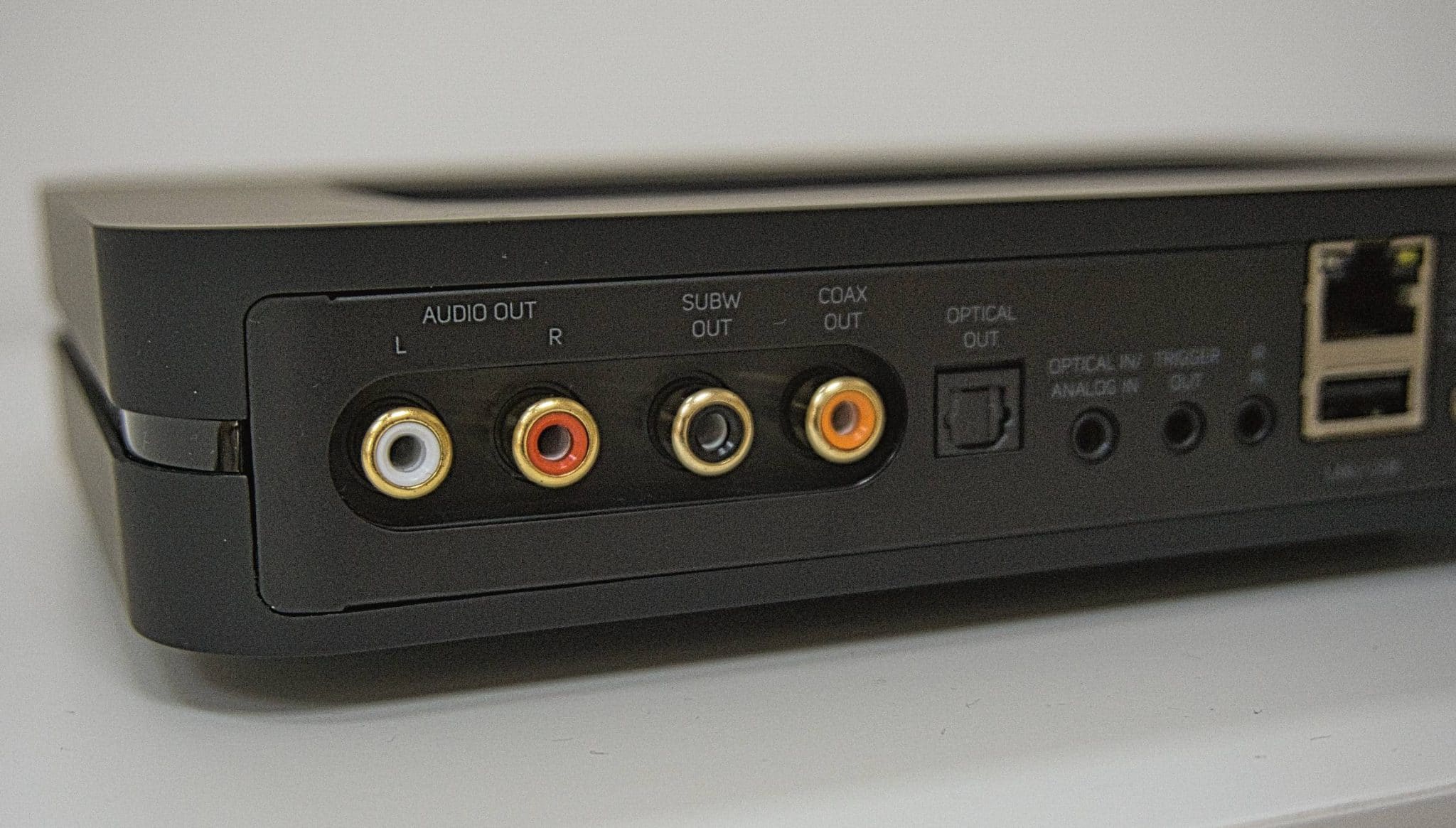

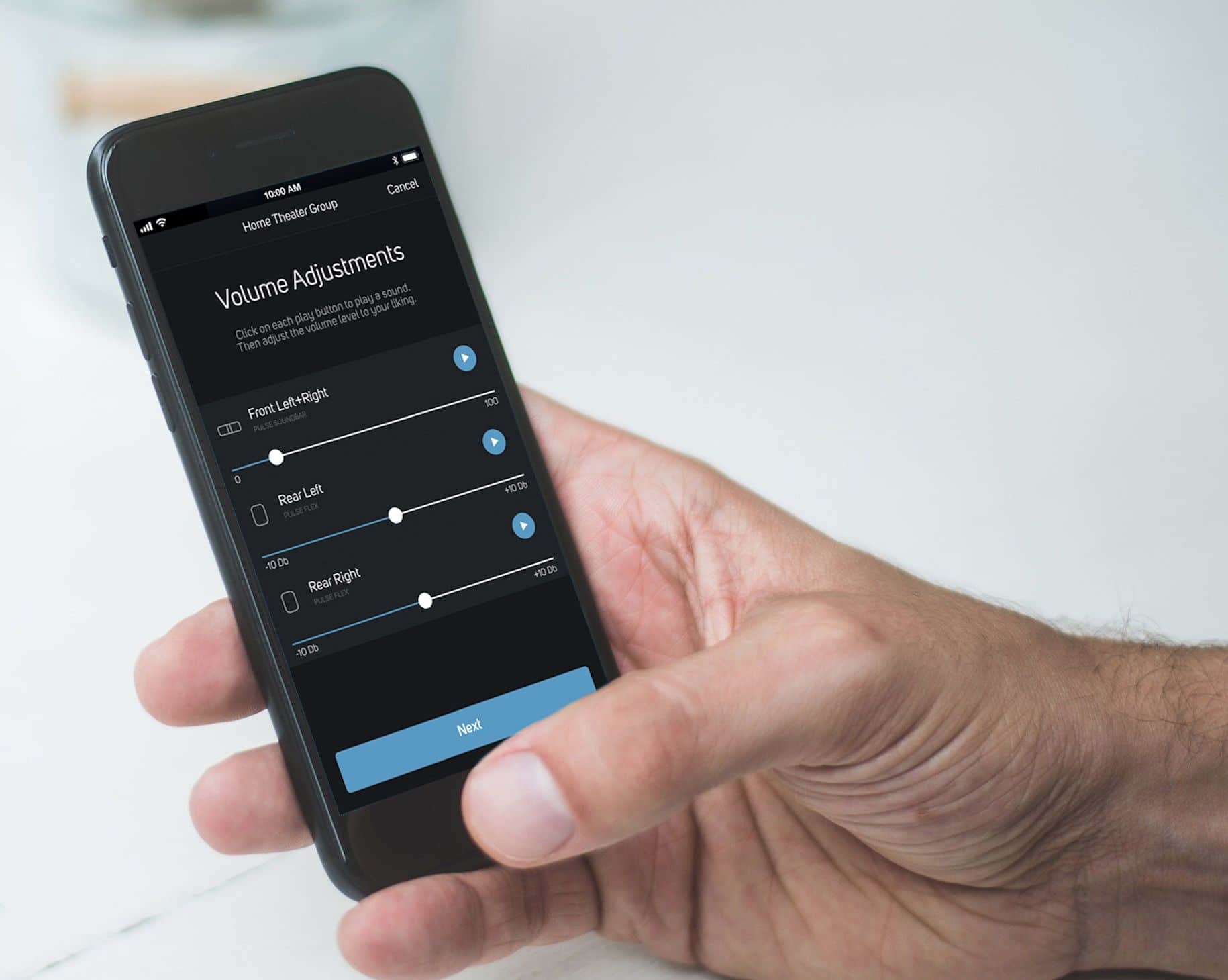
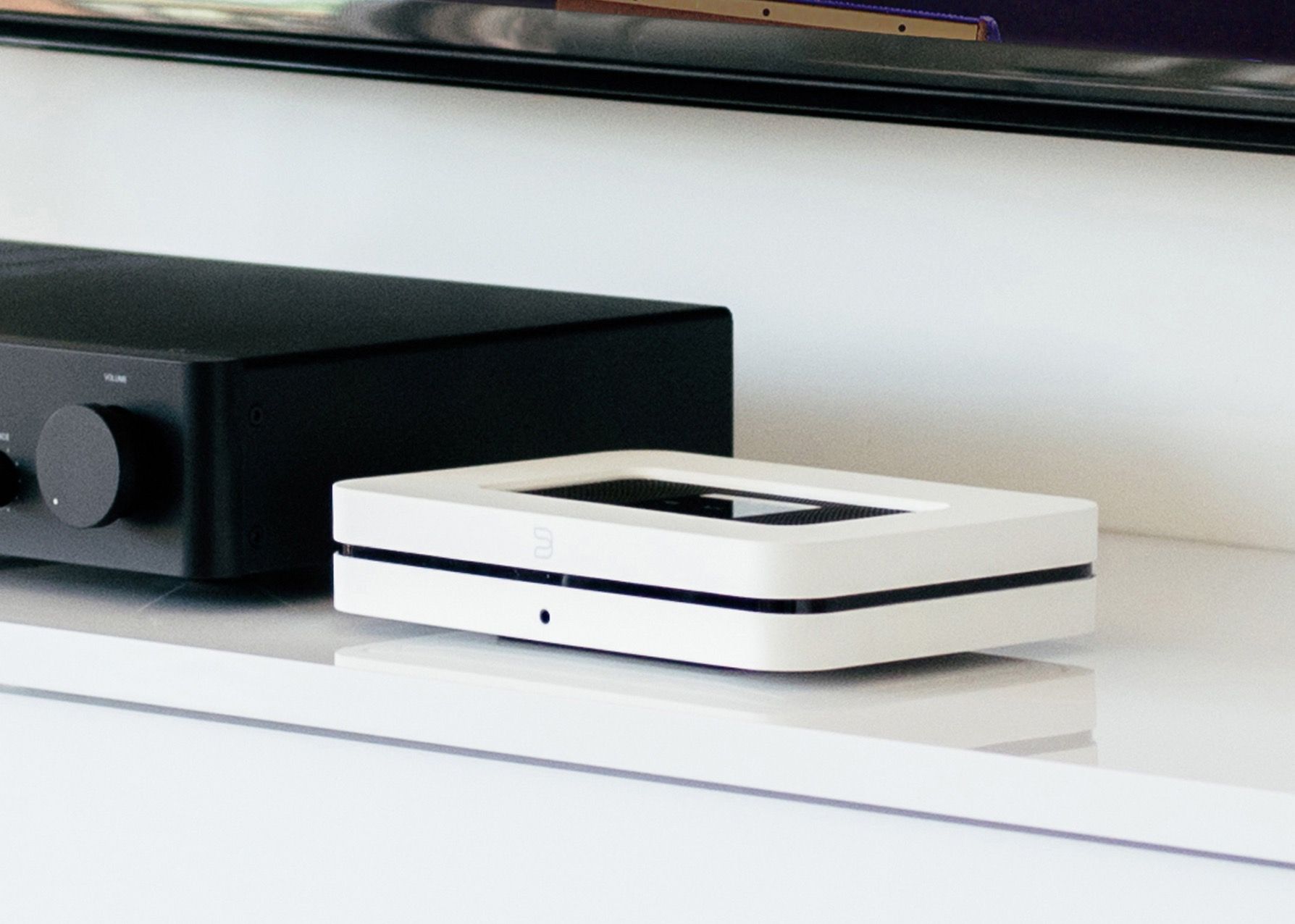


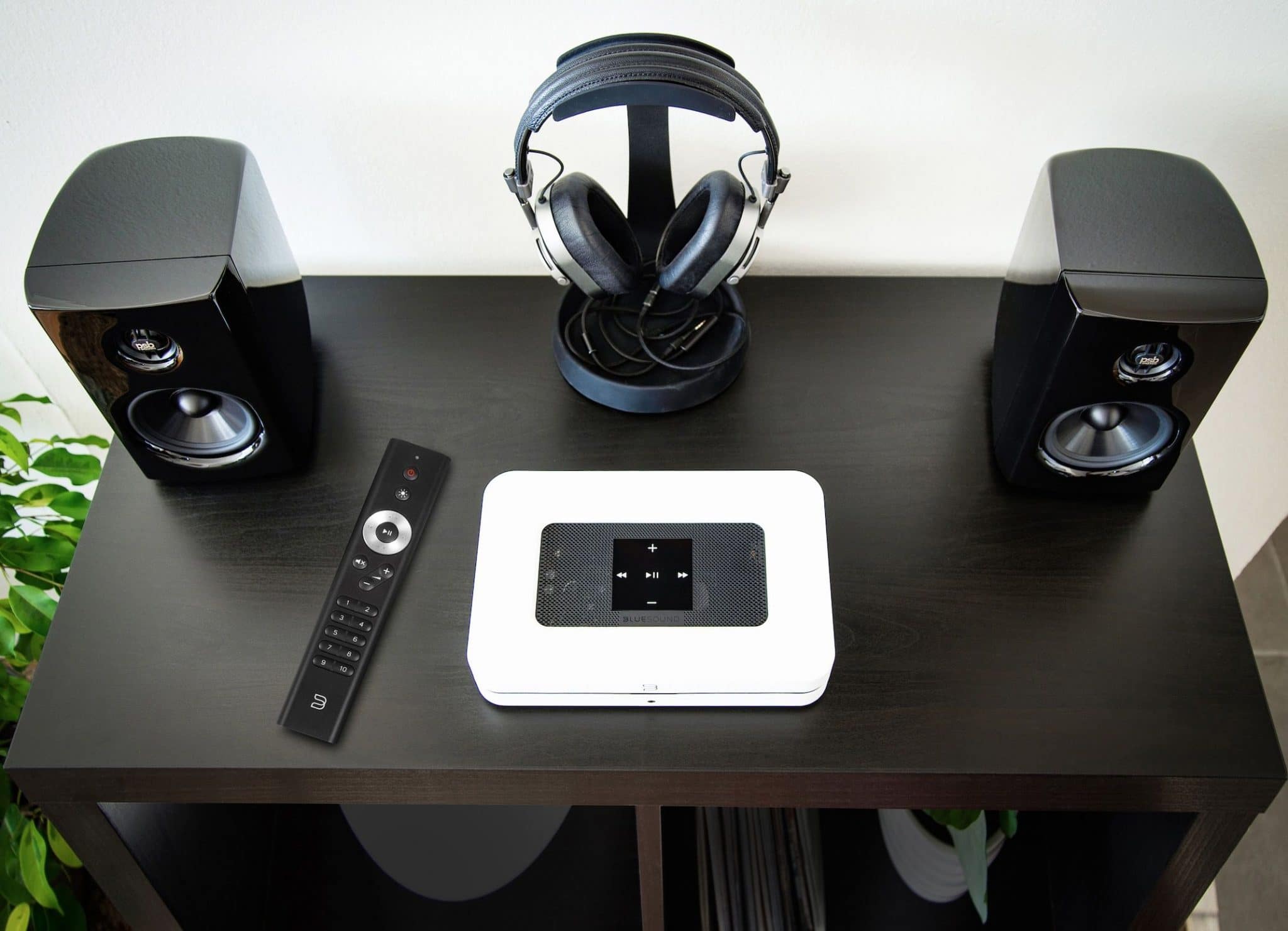
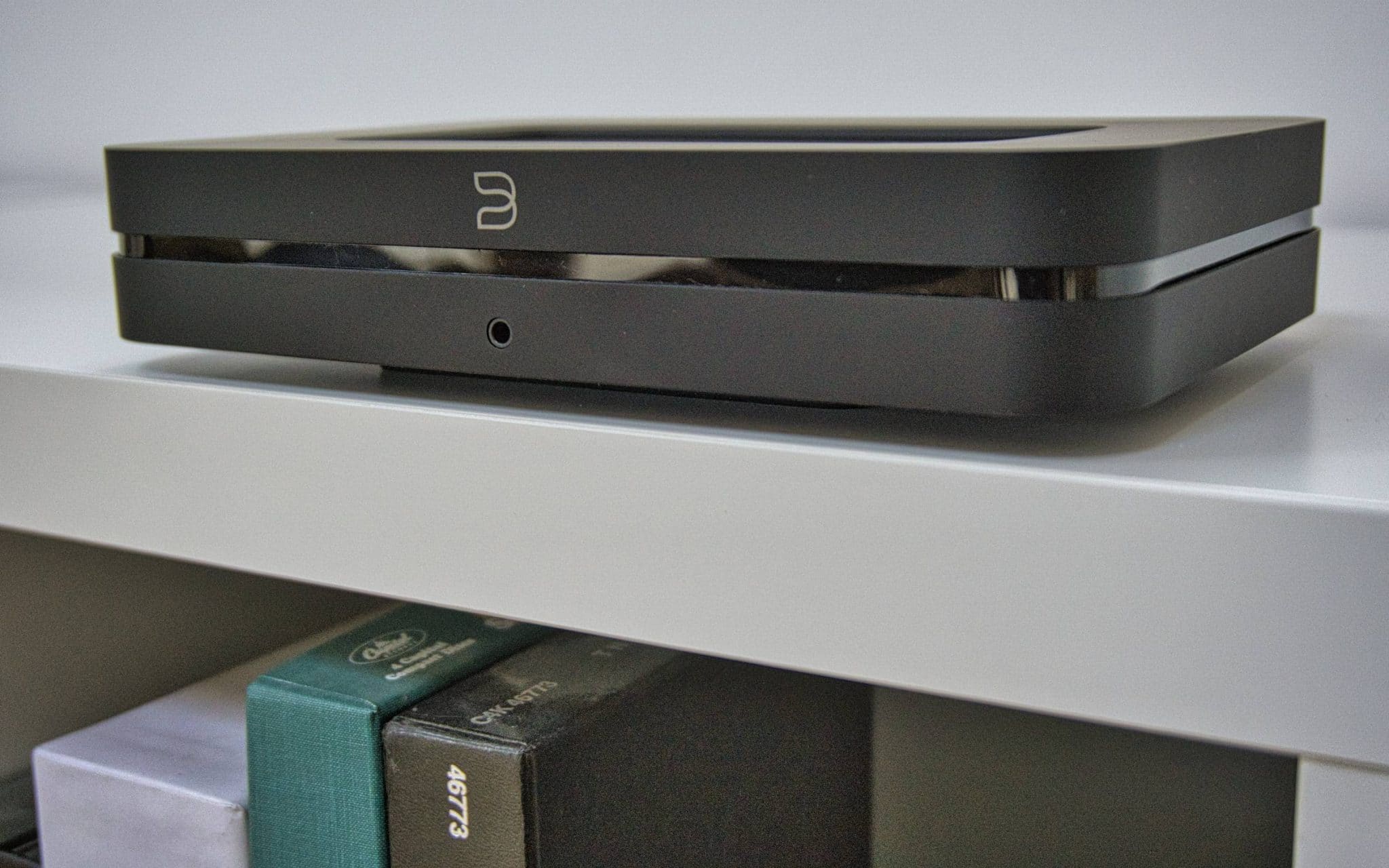


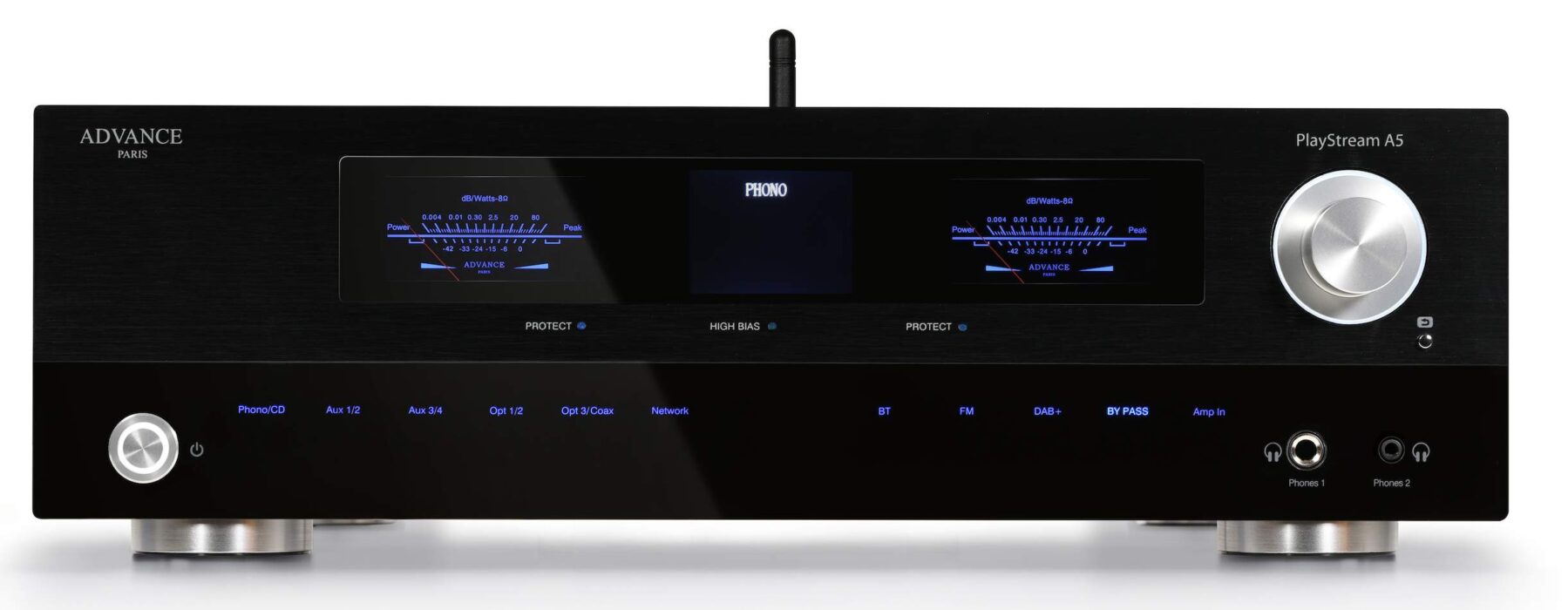
Thank you.
Hi Paul
Thanks for this review and i’ve looked at the comments as well. I know you recommend using a separate pre-amp (as always) but does the Node 2 even have a pre-amp? I guess it does given you can change the output volume?
If so, to choose between the Node 2 pre-amp power amp OR bypass the Node 2 pre-amp (by selecting the fixed output level option) integrated amp? In both situations the pre-amp will be integrated somewhere, but it’s just a question of which of 2 evils to choose, if it makes sense?
Likewise, would you go for the internal DAC or the DAC of an integrated amp? All things equal of course!
Many thanks in advance and hope the above makes sense!
Firstly – what’s your budget on all of this, Clement? That will concentrate our minds 🙂
Guess the question is of a broader nature. If the say “audiophile entry level” where components are say ¬£500-750 each – are you typically better off with a DAC that’s integrated to a streamer or a DAC that’s integrated in a power amp? Assuming you are in the same value for money sort of range on either end of the chain
Separate is always better, Clement. But you do what you can with the money you have, of course. The less cash you have, the more compromises you make and the more choices you have to consider. Each case is different and you can’t really generalise on the best of two evils. It depends. It always depends. Which is why I’m in a job 🙂
If it helps, I tried comparing the DAC on my Cambridge CXA80 vs. the 2i DAC and I did notice a slight improvement using the CXA80 DAC (source material from Tidal). The difference seemed less noticeable with Tidal MQA tracks.
Paul,
From your comments I see you prefer the Audiolab 6000N to the Node 2i.But the Node app is better than the Audiolab app, no? Or you don´t know?
I like the ‘N’ sound but the 2i has much to recommend it and I wouldn’t complain at all if I was to live with it, Nuno. And for me, sound quality has precedence over any app issues. I haven’t tested the N’s app but colleagues tell me that it works well.
Dear Paul, thanks a lot for your advice on the Node 2i and the Audiolab. I purchased the Node in the end and must say I’m very satisfied, especially considering the price. It’s a very musical and natural sounding streamer and the app is also very good. I have read however that its internal DAC is its weak point. Would you recommend adding an external DAC? Would this dramatically improve performance? I have been thinking about the Musical Fidelity MX or the Chord Mojo. Grateful for any advice you can provide and hope you’re doing OK. Best regards
Hi Ignacio – separating the DAC would be a good idea, yes. What budget do you have for this potential purchase?
Thanks a lot, Paul. In terms of budget, I would like to keep it below £ 1000. These are some of the models I’m considering: Musical Fidelity MX DAC, Rega DAC R, DAC Heed Abacus, Chord Mojo (but looks like it’s more for on the go), Chord Qutest (might be a little over my budget), Audiolab M DAC. Considering the Node 2i already has more than a pretty decent sound (perhaps some lack of detail), if I go for an external DAC I would like to ensure it will be an added value to the streamer which will significantly improve its performance and sound. And also be able to use it with my Apollo CD player. Kind regards
On that basis – I’d go for the Heed, Ignacio. Did you see my review on that one?
Thanks a lot, Paul. Yes I did. The Heed looks pretty good and indeed has received several good reviews. Do you think it would outperform the Rega DAC and the Chord Qutest? Kind regards
I’m unsure, to be honest, Ignacio because I haven’t directly compared the Heed with those DACs. That said, I found nothing to complain about with the Heed and would have been very happy to integrate into my reference system.
Thanks again, Paul, much appreciated. To be honest, I hesitate to spend, at least in the short term, a hefty sum on an external DAC as I find, as the days go by, the Node 2i does a pretty good job. Kind regards
Hi Paul,
Lovely reading your reviews and read about the Audiolab 6000A as well. I can’t quite make my mind up but was hoping you could help.
So a bit of context:
1. I have a Sonos Beam and One which I bought mainly because I live in a tiny flat in London and don’t have much space to spare. I must say that I truly enjoy the convenience that it gives and sound quality is okay when watching movies but sorta falls apart with music.
2. I am thinking of getting the B&W 606 but could use some recommendations with the amp pairing.
3. I intend to hook the pair up to my TV for Netflix/YouTube/Prime and also to play loads of music (say 80% music – jazz, easy listening, R&B, soul, world etc.) and I like warm sounding music.
4. I hope to move into a bigger space in just over a year and this system will move into my study purely for music.
5. Currently thinking of either the Audiolab 6000A or BlueSound PowerNode 2i or Marantz NR1200. I love that the BlueSound and Marantz and NAD have an ARC connection so will be easy using with my TV. Also, they have Alexa and support streaming whereas with the Audiolab, it will be Bluetooth only streaming. I have seen many rave reviews of the Audiolab but not so much of the latter. Ultimately, I am happy to sacrifice niceties like the ARC connection and Alexa for better sound as this will eventually be in my study.
6. My music source will pretty much be Spotify Premium @highest setting (TIDAL and Amazon Music HD don’t have all the songs I listen to) so suppose it won’t matter if its Bluetooth streaming?
Appreciate your opinion on this.
Thank you.
In sonic terms, I prefer the separates route. Hence, I’d go 6000A/2i instead of Powernode. Separating the tools, lowers the noise floor. The 2i will provide all the Internet services you need and can connect to your TV while the 6000A will give you the best tonal balance of the amps in your shortlist. Any particular reason why you prefer the 606 speakers?
Hi Paul,
Thank you for your review which really helped in deciding to purchase the Node 2i to replace my 10 year old Sonos Connect. Out of interest, which cables did you find worked well with the 2i?
The Node 2i is a 50th Birthday present and is within my budget of £500. For reference, the remainder of my system is a Linn Exotik pre-amp, Linn Power amps and Linn Katan speakers. I use a very basic QED rca cable and a chord C Stream usb cable with my Sonos at the moment.
I suspect the 2I will benefit from something a bit better. I am considering the Chord Shawline which will improve on where I am now BUT will also not be out of place when I can afford to progress on beyond the 2i in the future.
Many thanks – Adrian
No problem. I used Telurium Q Ultra Blacks but QED cables (rather lower in cost) also worked very well, Adrian. And yes, Chord is also recommended in general terms.
Hi Paul.
I own an Audiolab 6000A and I am now looking for a streamer, because now I use bluetooth to transport music from my laptop to the 6000A.
Hesitating between 6000N and Node 2i.
Taking your experience into account, which one would you choose for yourself?
I never got to test the N, I’m afraid, despite reviewing the 6000A and 6000CDT so can’t be absolutely sure although I’ve heard good things and colleagues do like it.
I see that these posts are almost a year old. I am trying different pieces with my Bluesound 2i. The Bluesound 2 i is replacing my Laptop (windows 10) to a AudioengineD1. Clearly the dynamics are improved with the 2i, (CAT 6e). I do not like the sound from the internal 2i DAC. I tried a few combinations and so far I am using a Cambridge DAC Magic 100. fed with a (cheap) Toslink from the 2i. My understanding is that good coax cables are better than Toslink ? Then AudioQuest rca cables to my Yamaha RS 700. I am going to try AudioQuest rca cables instead of the Toslink and see if that clears up a very slight gritty sound (clipping?) with music that is very “busy” at higher volumes.
Hi Fred – yes, in tests I prefer coax to Toslink. Cable quality is often higher. Coax is also often capable to higher bitrates although that can depend on the inherent tech it sits within.